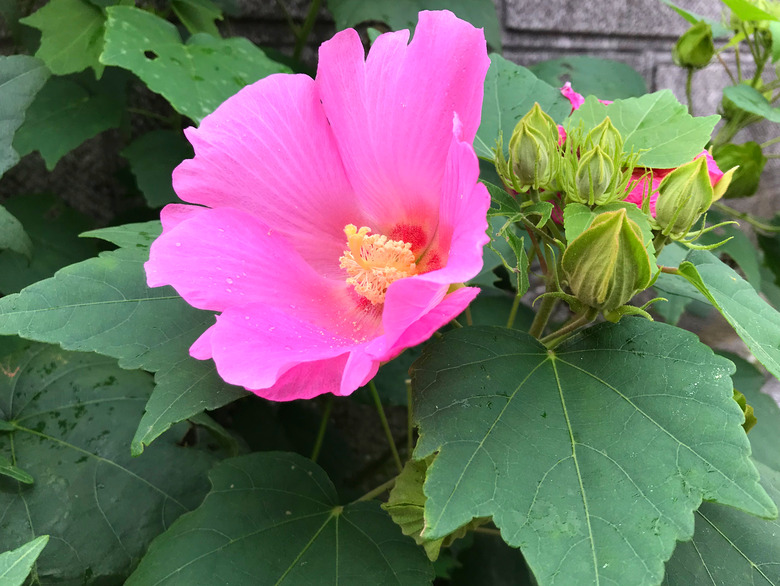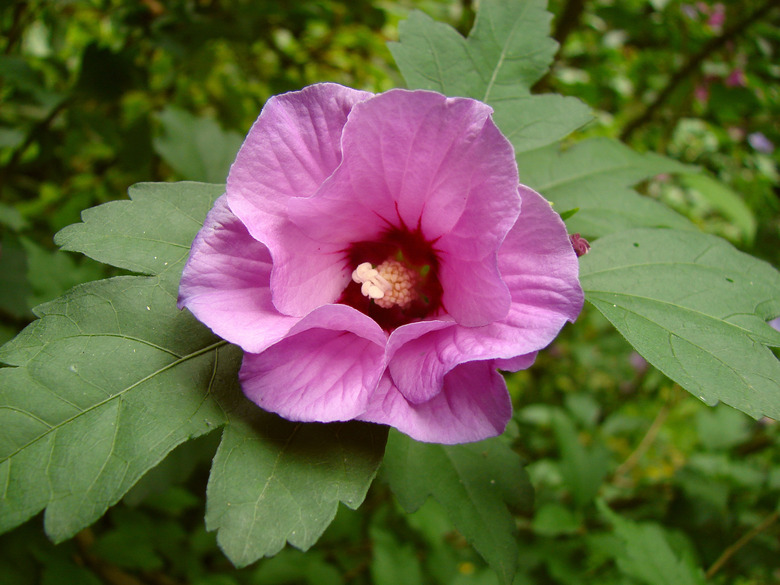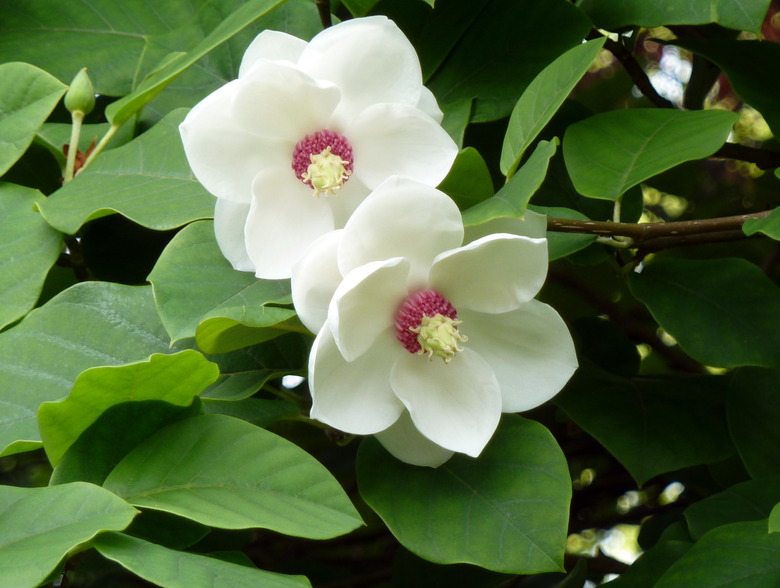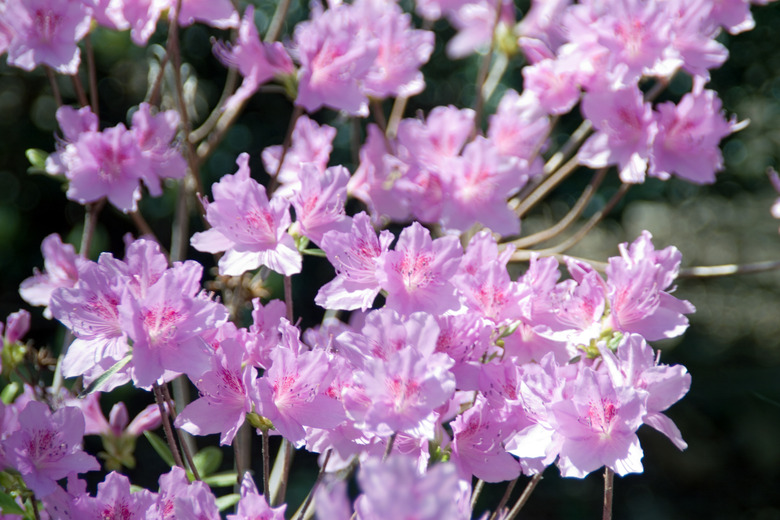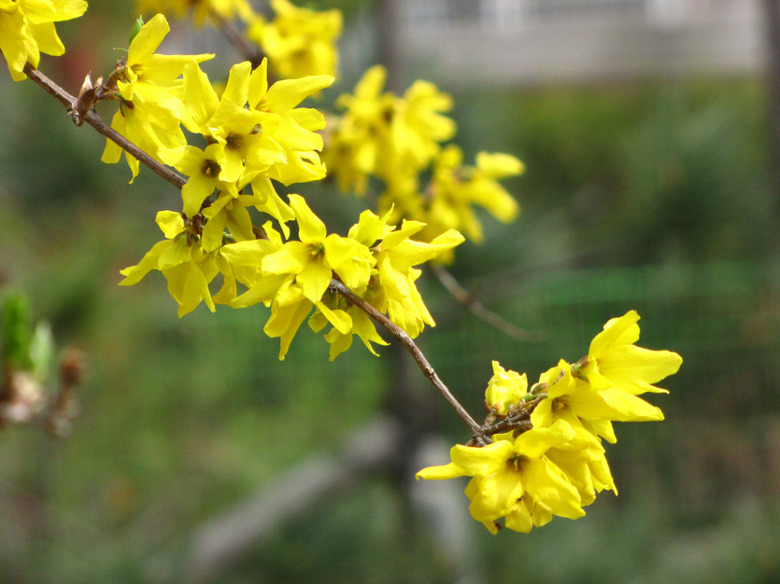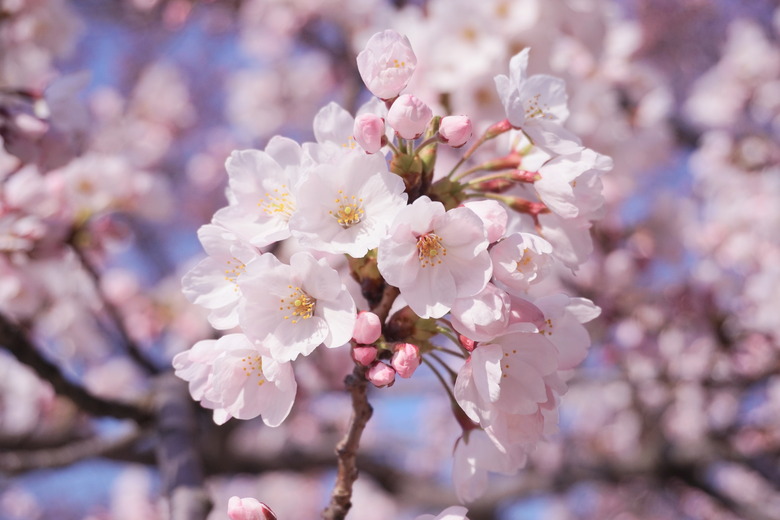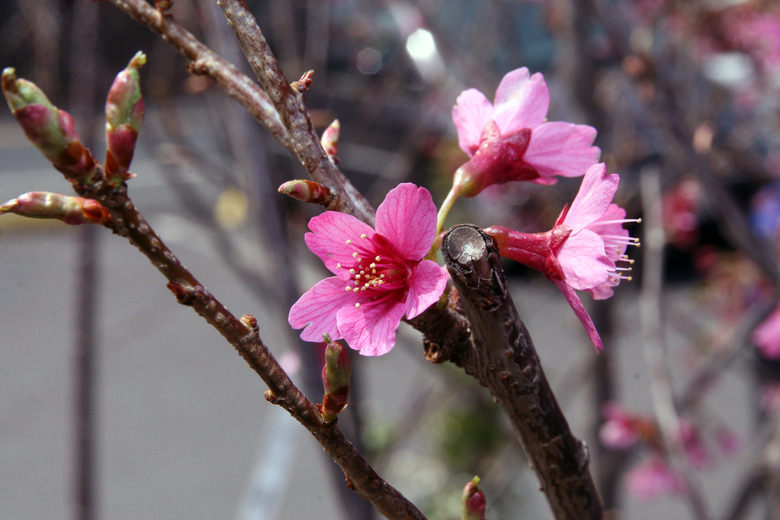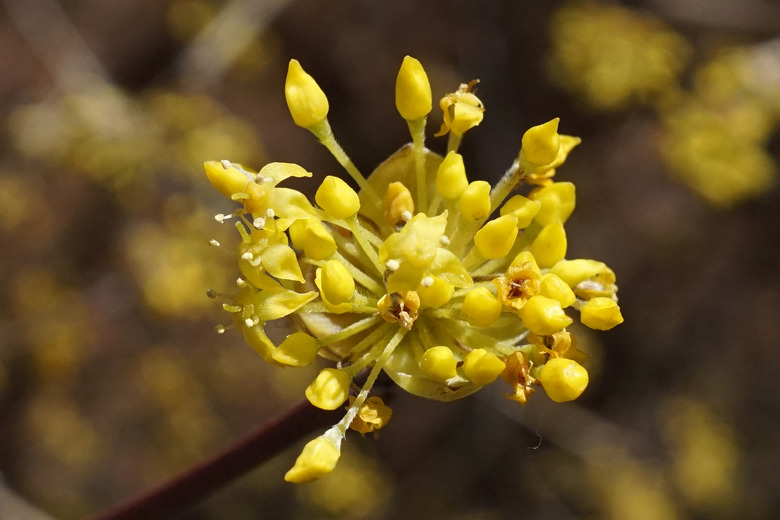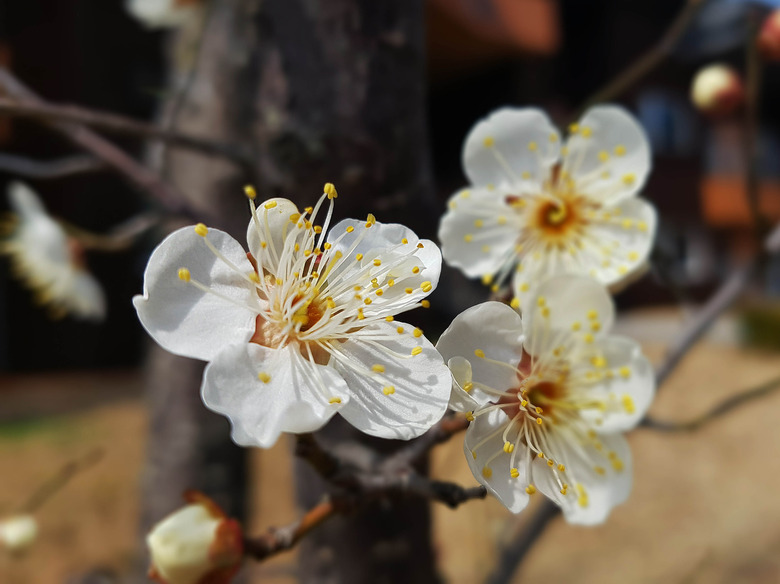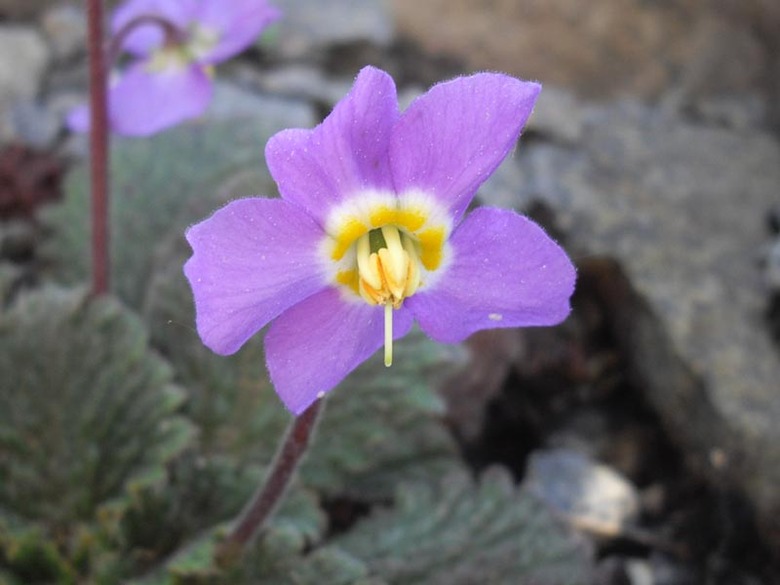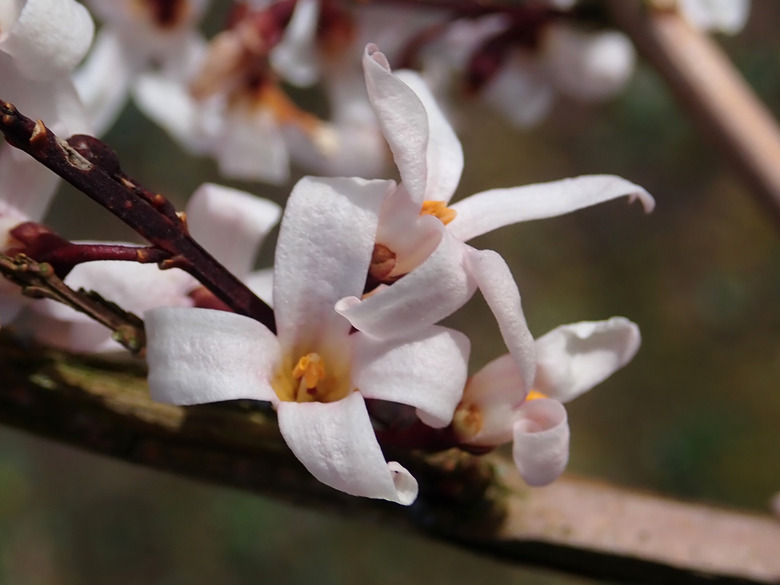Beautiful Flowers Found In North And South Korea
The flowers of the Korean peninsula range from the simple to the exotic in shape, color and fragrance. In some cases, common Korean flower names may apply to more than one species or cultivar of the same genus, relying on color and appearance rather than a Latin scientific name.
Many Korean flower species or their cultivars have been imported to North America and grow well in informal, cottage, formal and Zen-style gardens.
National Korean Flower Names
Because the peninsula was divided into two separate nations after 35 years of Japanese occupation and the end of World War II, the national flowers of North and South Korea differ. The area north of the 38th parallel became North Korea, supported by the Soviet Union; and the southern region become South Korea, supported by the United States.
This division has continued to the present, including having different national flowers and other symbols of separate nations.
Hibiscus (Rose of Sharon—Mugunghwa)
The rose of Sharon (Hibiscus syriacus), or mugunghwa, is the national flower of South Korea. It has long been called "blossom from heaven" by the people of Korea. It symbolizes the successes as well as the tribulations that the Korean people have endured through the centuries. The varieties are grouped by flower colors: asadal, baedal and dansim.
The asadal flower is white and features a rich red center that fades to pink as it extends to the edges of the petals. The baedal blossom is pure white. Dansim flowers are white, red, purple or blue with an intensely colored center of red or purple.
These hardy hibiscus flowers, which grow well in North America, can be found in local nurseries, garden centers and online. The shrubs may be pruned to form a hedge or into a single or multi-stemmed tree to provide light shade over a patio or in a courtyard. The flowers attract hummingbirds, bees and butterflies.
- **Scientific Name:** Hibiscus syriacus
- **Common Names:** Mugunghwa, rose of Sharon, shrub althea
- **Type:** Deciduous shrub
- **Size:** 8 to 12 feet tall and 6 to 10 feet wide
- **Light:** Full sun to part shade
- **Water:** Medium
- **Soils:** Most well-draining soil types
- **Flowers:** Early summer through fall, 3-inch-wide hollyhock-like blossoms
- **USDA Zones:** 5 to 8
Oyama Magnolia—Mongnan or Mokran
The North Korean national flower is the oyama magnolia (Magnolia sieboldii), known as mongnan or mokran in Korea. This hardy shrub is often pruned into a tree-like form in gardens, making it ideal for small spaces and courtyards.
While most magnolia species bloom in spring, oyama magnolia blooms in the summer and bears 3-inch-long oval pink fruits. Birds are attracted to the fruits and the orange to red seeds that appear when the fully ripened fruits split open in fall.
- **Scientific Name:** Magnolia sieboldii
- **Common Names:** Mongnan, mokran, Korean mountain magnolia, oyama magnolia, Siebold's magnolia
- **Type:** Deciduous shrub
- **Size:** 10 to 15 feet tall and wide
- **Light:** Full sun to part shade
- **Water:** Medium to moist
- **Soils:** Slightly acidic, organically-rich, well-draining soils
- **Flowers:** Early to late summer, 4-inch-wide fragrant white flowers with pink stamens
- **USDA Zones:** 6 to 8
Kimjongilia Begonia and Kimilsungia Orchid
While often thought of as national flowers, the lovely Kimjongilia begonia and Kimilsungia orchid are specific cultivars renamed in honor of North Korea's late leader, Kim Jong-il, and his father, the nation's founding leader Kim Il-Sung, respectively. An annual spring festival is held in North Korea for each flower.
The red-flowering Kimjongilia begonia flower (Begonia 'Kimjongilia') is known as the "immortal flower." It is a hybrid cultivar developed from South American tuberous begonias. In general, begonias are shade-loving tropical plants that thrive in USDA zones 9 through 10. Plant in pots or lift the tubers in zones 8 and below and take them inside for the winter.
The bright magenta Kimilsungia orchid (Dendrobium 'Kimilsungia') is likely a renamed cultivar Clara Bundt, according to the Botanical Society of America. Dendrobium orchids are generally grown as indoor plants outside of USDA zones 9 through 12. Keep in frost-free locations in part or dappled shade outdoors and in bright light indoors. Water and apply a one-quarter to half-strength liquid fertilizer weekly through the growing season.
The Native Flowers of Korea
In addition to the much-loved national flowers of North and South Korea, many of the native blossoms of the Korean peninsula are available to U.S. gardeners. From azaleas to flowering cherries to resurrection plants, there's a beautiful flower (in Korean, "aleumdaun kkot") for every garden.
When planting any flower, shrub or tree in the garden, consider the size of the plant versus the space available, the local soil types, sun or shade and the recommended USDA hardiness zones.
Azalea—Jindallae Kkot
The pink azalea flowers (Rhododendron yedoense var. poukhanense), or jindallae kkot, that cover the hills and mountains of Korea in spring share their name with a famous Korean poem about love and loss by Kim Sowol (1902‒1934).
The parent plant of many modern hybrid evergreen azaleas, this shrub thrives in partial to full shade in moist, well-draining soils. The showy flowers attract butterflies and hummingbirds, so plant an azalea as a specimen plant near the patio or in a pollinator garden.
- **Scientific Name:** Rhododendron yedoense var. poukhanense or Rhododendron poukhanense
- **Common Names:** Compact Korean azalea, Korean yodogawa azalea, poukhanense azalea
- **Type:** Deciduous or semi-evergreen shrub
- **Size:** 3 to 6 feet tall and 6 to 12 feet wide
- **Light:** Partial, dappled or deep shade
- **Water:** Medium to moist
- **Soils:** Acidic, organically-rich, well-draining loamy or sandy soils
- **Flowers:** Fragrant 1- to 3-inch-wide, pink or lavender flowers with darker freckles
- **USDA Zones:** 4 to 9
Warning
All parts of azaleas and rhododendrons are toxic to humans, pets and horses. Symptoms include watering eyes and nose, gastrointestinal distress, respiratory distress, paralysis of arms and legs and, eventually, coma. Keep out of reach of children and pets.
Golden Bell Tree (Forsythia)—Gaenari
The yellow flowers of the golden bell tree (Forsythia koreana) cover the shrub in early- to mid-spring. After the flowers fade, green leaves cover the loose, multi-stemmed shrub.
The cultivar Sunny (Forsythia koreana 'Sunny'), which is available to North American gardeners, features larger blossoms than the species plant. It can be used a foundation plant, hedge or privacy screen.
- **Scientific Name:** Forsythia koreana
- **Common Names:** Golden bell tree, Korean gold bell tree, Korean goldenbell tree
- **Type:** Deciduous shrub
- **Size:** 5 to 8 feet tall and 4 to 6 feet wide
- **Light:** Full to part sun
- **Water:** Medium to moist
- **Soils:** All well-draining soils
- **Flowers:** Early- to mid-spring, smaller than 1-inch-wide yellow blossoms
- **USDA Zones:** 6 to 8
King Cherry Blossom—Wangbeonnamu
Korea's beloved king cherry tree (Prunus × nudiflora), or wangbeonnamu, originated on Jeju Island. Genetic analysis has revealed that this lovely flowering cherry tree is a hybrid of the Korean Sargent cherry (Prunus sargentii rehder) and weeping cherry (Prunus pendula f. ascendens 'Rosea'). Because it doesn't produce viable seeds, it can be reproduced only by grafting or cloning. It is not readily available outside of Korea.
- **Scientific Name:** Prunus yedoensis or Prunus yedoensis var. nudiflora or Prunus × nudiflora
- **Common Names:** King cherry, Korean cherry tree
- **Type:** Deciduous tree
- **Size:** 15 to 62 feet tall
- **Flowers:** Pink blossoms in clusters
- **USDA Zones:** N/A
Yoshino Cherry Tree
While the king cherry is listed as an endangered species and generally not available in North America, the Japanese Yoshino flowering cherry has very similar blossoms. The Yoshino cherry tree (Prunus x yedoensis), which has been planted across South Korea, is one of the flowering cherry species gifted to the U.S. government and planted in Washington, D.C.
Place a flowering cherry as a focal point in the garden where any tiny black cherries missed by the birds can safely drop off the tree into the surrounding mulch. Avoid planting where the cherries can litter and stain concrete and other hardscape.
- **Scientific Name:** Prunus x yedoensis
- **Common Names:** Tokyo cherry, Yoshino cherry
- **Type:** Deciduous tree
- **Size:** 30 to 40 feet tall and wide
- **Light:** Full sun to part shade
- **Water:** Medium
- **Soils:** All well-draining soils
- **Flowers:** Early spring, fragrant 1 1/4- to 1 1/2-inch wide white or pink-tinged blossoms in clusters
- **USDA Zones:** 5 to 8
Warning
Except for the fruits, all parts of cherry trees are toxic to humans, pets and livestock. This includes the cherry pits, which also contain amygdalin and converts to cyanide in the body. Keep leaves, branches and cherry pits out of reach of children and pets.
Korean Cornelian Cherry—Sansuyu
The Korean cornelian cherry (Cornus officinalis), native to China, also grows in Japan and Korea. This large shrub or small tree is as an understory plant in forests, along forest edges and on mountain slopes.
The bright, late winter and early spring flowers mature into small edible but acidic fruits that attract birds. Plant in woodland gardens, along foundations or as a hedge.
- **Scientific Name:** Cornus officinalis, formerly Cornus officinalis var. koreana and Macrocarpium officinale
- **Common Names:** Chinese cornelian dogwood, Japanese cornelian cherry dogwood, Korean cornelian dogwood
- **Type:** Deciduous shrub or small tree
- **Size:** 15 to 30 feet tall and 15 to 25 feet wide
- **Light:** Full sun to partial shade
- **Water:** Medium to moist
- **Soils:** Acidic, organically-rich, well-draining soils
- **Flowers:** Late winter to early spring, 3/4-inch-wide clusters of 1/6-inch-wide yellow blossoms
- **USDA Zones:** 5 to 8
Plum Blossom—Maehwa
The first flowers of mid-winter and early spring include the plum blossoms (Prunus mume), or maehwa, celebrated in festivals in South Korea. One well-known maehwa festival is the Gwangyang Maehwa. The fruits produced by the famous maehwa trees are called maesil, or Korean green plums.
Technically, maehwa trees are related to both plums and apricots, producing sour to bitter fruits that are used in making condiments, syrups, tea and other beverages. Cultivars available in North America include Alba, Kobai, Peggy Clarke and W.B. Clarke.
- **Scientific Name:** Prunus mume
- **Common Names:** Chinese plum, Japanese apricot, Japanese flowering apricot, Korean green plum, mei, mume, ume
- **Type:** Deciduous tree
- **Size:** 15 to 20 feet tall and wide
- **Light:** Full sun to partial shade
- **Water:** Medium to moist
- **Soils:** Acidic, organically-rich, well-draining loam
- **Flowers:** Late winter through early spring, fragrant 1-to 1 1/4-inch-wide white, pink, rose or red single, semi-double or double blossoms, depending on the cultivar
- **USDA Zones:** 6 to 9
Pyrenean Violet—Saengsacho
The Pyrenean violet or resurrection plant (Ramonda myconi), also known as saengsacho in Korea, is a hardy relative of the African violet (Saintpaulia ionantha). It is found as far east as Korea and west to the Pyrenees Mountains of Spain. The flowers rise on stems above a rosette of green leaves.
While the plants grow best in organically-rich, well-draining soils, if deprived of water, the leaves dehydrate and shrivel until watering is restored, and then the plants rehydrate and fully recover.
- **Scientific Name:** Ramonda myconi or Ramonda pyrenaica
- **Common Names:** Balkan primrose, hardy African violet, resurrection plant, Pyrenean primrose, Pyrenean violet, rosette mullein
- **Type:** Evergreen perennial
- **Size:** 4 inches tall and 8 inches wide
- **Light:** Part shade
- **Water:** Medium to moist
- **Soils:** Organically-rich, well-draining sandy loam to clay loam
- **Flowers:** Late spring to early summer, 1-inch-wide purple, pink or white blossoms
- **USDA Zones:** 5 to 10, depending on the cultivar
White Forsythia—Miseonnamu
The loose branches and white flowers of the white forsythia (Abeliophyllum distichum), or miseonnamu, add an informal flair to the cottage garden or foundation plantings.
Plant this multi-stemmed shrub in the back of the flower bed, because after the flowers fade, it disappears into the background with other foliage plants. Prune immediately after flowering so that next spring's flower buds have time to form during the summer and fall.
- **Scientific Name:** Abeliophyllum distichum
- **Common Names:** Korean abelia, Korean abelialeaf, Korean abeliophyllum
- **Type:** Deciduous shrub
- **Size:** 3 to 5 feet tall and 3 to 4 feet wide
- **Light:** Full sun to partial shade
- **Water:** Dry to medium, drought-tolerant
- **Soils:** All well-draining soils
- **Flowers:** Spring, fragrant clusters of white or pale pink flowers
- **USDA Zones:** 4 to 8
References
- History.com: Why Are North and South Korea Divided?
- Ministry of the Interior and Safety – National Symbols of the Republic of Korea: The National Flower – Mugunghwa
- Missouri Botanical Garden: Hibiscus syriacus
- Missouri Botanical Garden: Magnolia sieboldii
- Botanical Society of America – Plant Science Bulletin: Kimilsungia: How an Indonesian Orchid Became a Revered Symbol in the Democratic People's Republic of Korea After Its Name Was Changed
- Missouri Botanical Garden: Dendrobium (Group)
- North Carolina Extension Gardener Plant Toolbox: Rhododendron yedoense var. poukhanense
- Proven Winners: Flying Machine Forsythia koreana
- BBC Earth: Korea's Beautiful Blossom Season
- The Korea Herald: King Cherry Trees of Korea Replicated with Cloning Science
- Missouri Botanical Garden: Prunus × yedoensis
- North Carolina Extension Gardener Plant Toolbox: Cornus officinalis
- Michelin Guide: [Seasonal Ingredients] Maesil, a Pantry Staple
- North Carolina Extension Gardener Plant Toolbox: Prunus mume
- Smithsonian Magazine: Meet the Real Resurrection Plant, Ramonda myconi
- North Carolina Extension Gardener Plant Toolbox: Miseonnamu Abeliophyllum distichum
